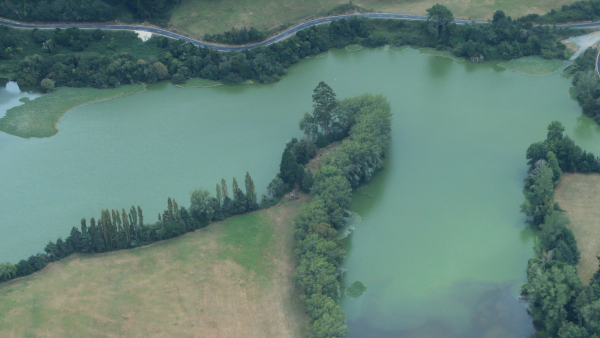Algae occur naturally in our rivers, lakes, streams and coastal waters, and flourish during hot and fine conditions. Cooler temperatures make blooms less likely for most waterways, but winter blooms have been documented in Aotearoa New Zealand since 1970/80s.
Most algae are harmless, but high levels of some species may be toxic, and blooms may result in health warnings being issued.
During the warmer months, Waikato Regional Council and partner organisations monitor lakes and the Waikato River (including the hydro lakes). Some of the region's lakes are also monitored during winter months.
Algal blooms and their potential effects
LAWA and MPI - Factsheets and information on algal blooms
Water quality monitoring and results
Waikato Regional Council and partner organisations monitor lakes and the Waikato River (including the hydro lakes) during the warmer months.
During winter, testing for blue-green algae is carried out in five lakes in our region (Waikare, Whangape, Waahi, Hakanoa, Ngāroto). For other lakes and rivers, it is carried out in response to reports about possible algal blooms in the region.
Up-to-date results are reported on the LAWA (Land, Air and Waikato Aotearoa) website.
LAWA provides this information so you can use it as a guide to decide where and when to swim, or use the water for other recreational activities, such as fishing, sailing or wading. Make sure you always check the LAWA site and their swim smart checklist before deciding whether the water is safe to use or enter.
Please note that water quality monitoring results are representative at the time of sampling.
Heavy rain flushes contaminants from urban and rural land into waterways and we advise you not to swim for 2 – 3 days after heavy or prolonged rain – even at sites that generally have good water quality. Check that the water is clean and clear before taking a dip.
Cyanobacteria can rapidly bloom to harmful levels, and not all freshwater sites are monitored for these toxic algae.
Play it safe — if you can see cyanobacteria blooms in rivers or lakes, avoid contact for you and your pets.
Public health alerts and warnings from Te Whatu Ora - Health New Zealand
You can also stay up to date with public health alerts and warnings issued by Te Whatu Ora - Health New Zealand, including cyanobacterial warnings for waterbodies.
Visit the website below, and use the filter to select public health alerts and your preferred location.
Concerns and enquiries
If you have any enquiries about your local drinking water supply, please contact your local district or city council.
Public health units work closely with local councils to monitor drinking water standards. If you are concerned about health issues associated with your water supply, please contact one of the below health units.
Bay of Plenty Public Health Unit
For queries regarding Lake Taupō or the upper Waikato River (from Taupō to Lake Maraetai) contact the Bay of Plenty Public Health Unit on 0800 221 555.
Waikato Public Health Unit
If your enquiry relates to a different location than above, call the Waikato Public Health Unit on 0800 800 977.





